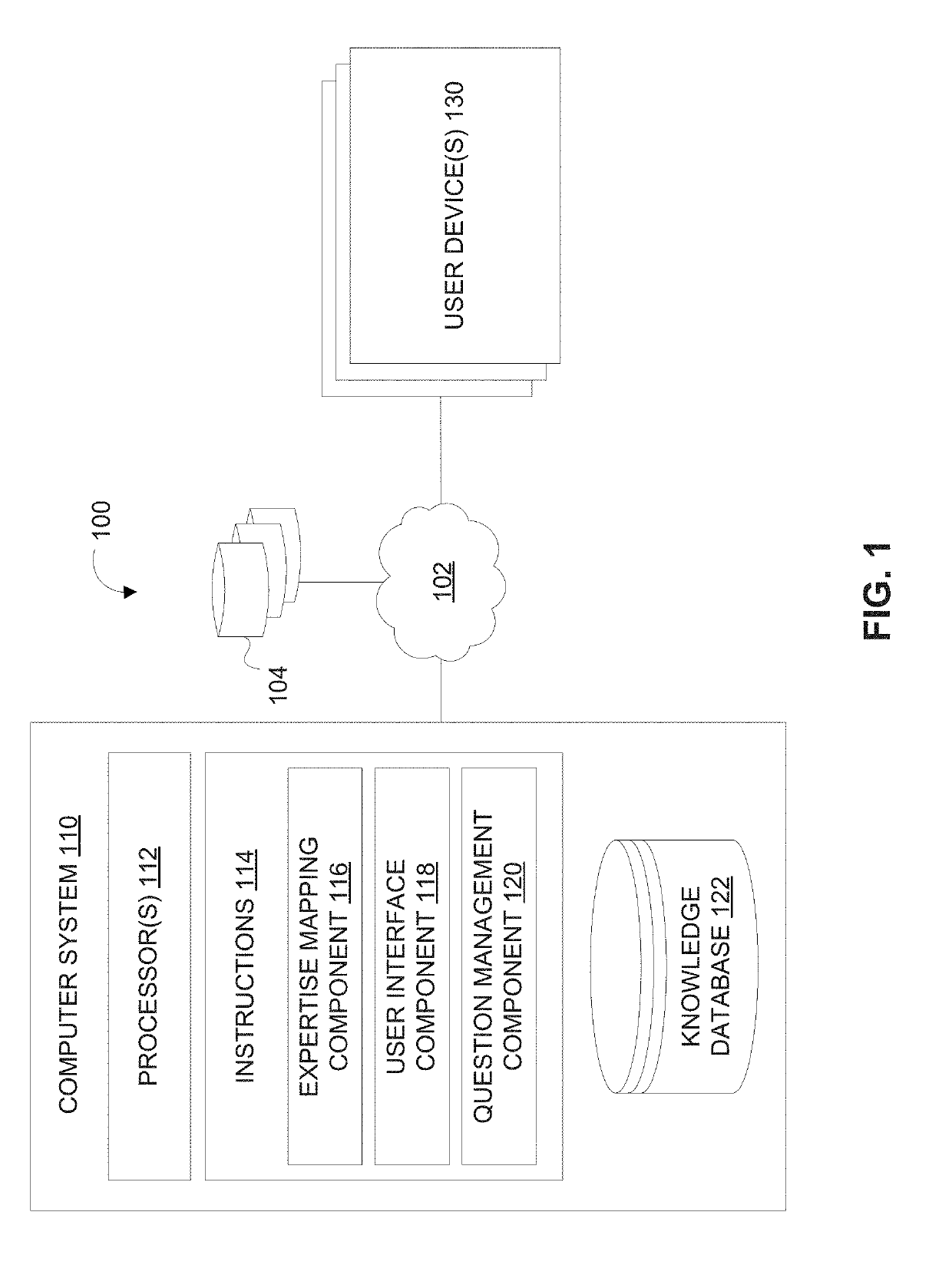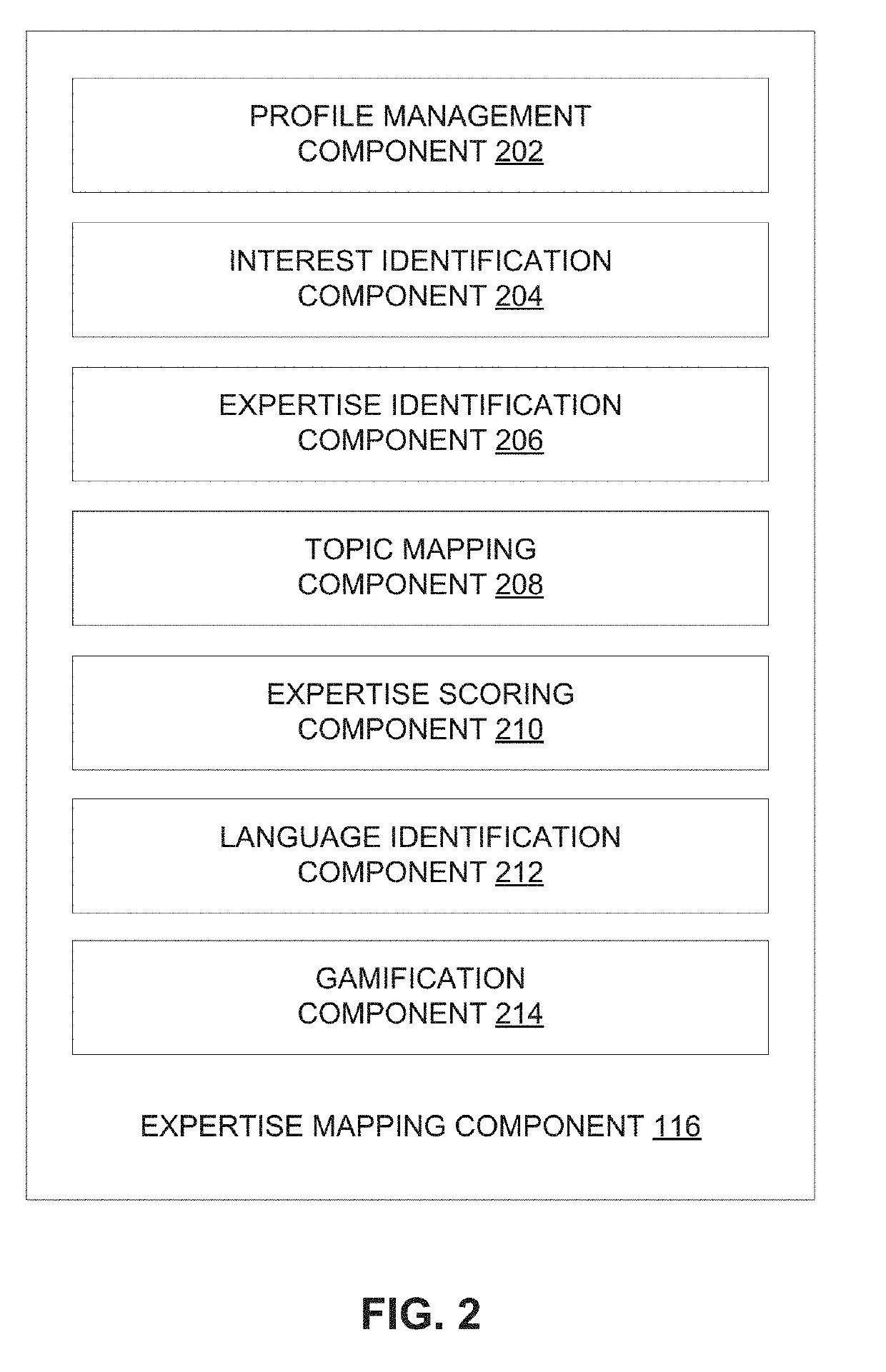Machine learning approach for query resolution via a dynamic determination and allocation of expert resources
a machine learning and query resolution technology, applied in the field of machine learning-based approaches, can solve problems such as human effort and system use of unsupervised learning techniques, and achieve the effect of effective and efficient resolution of user queries and rapid solving
- Summary
- Abstract
- Description
- Claims
- Application Information
AI Technical Summary
Benefits of technology
Problems solved by technology
Method used
Image
Examples
Embodiment Construction
[0025]It will be appreciated by those having skill in the art that the implementations described herein may be practiced without these specific details or with an equivalent arrangement. In other instances, well-known structures and devices are shown in block diagram form in order to avoid unnecessarily obscuring the implementations of the invention.
Overview of System Architecture
[0026]FIG. 1 illustrates an overview of a system 100 configured to map expert resources within an organization or group of users and identify expert resources to route questions based on the mapped expert resources, in accordance with one or more implementations. The system 100 may include databases 104, a computer system 110, one or more user device(s) 130, and / or other components. The system 100 may interface with one or more external entities (e.g., one or more user device(s) 130) via a network 102. The computer system 110 may include one or more physical processor(s) 112, instructions 114, a knowledge d...
PUM
 Login to View More
Login to View More Abstract
Description
Claims
Application Information
 Login to View More
Login to View More - R&D
- Intellectual Property
- Life Sciences
- Materials
- Tech Scout
- Unparalleled Data Quality
- Higher Quality Content
- 60% Fewer Hallucinations
Browse by: Latest US Patents, China's latest patents, Technical Efficacy Thesaurus, Application Domain, Technology Topic, Popular Technical Reports.
© 2025 PatSnap. All rights reserved.Legal|Privacy policy|Modern Slavery Act Transparency Statement|Sitemap|About US| Contact US: help@patsnap.com



